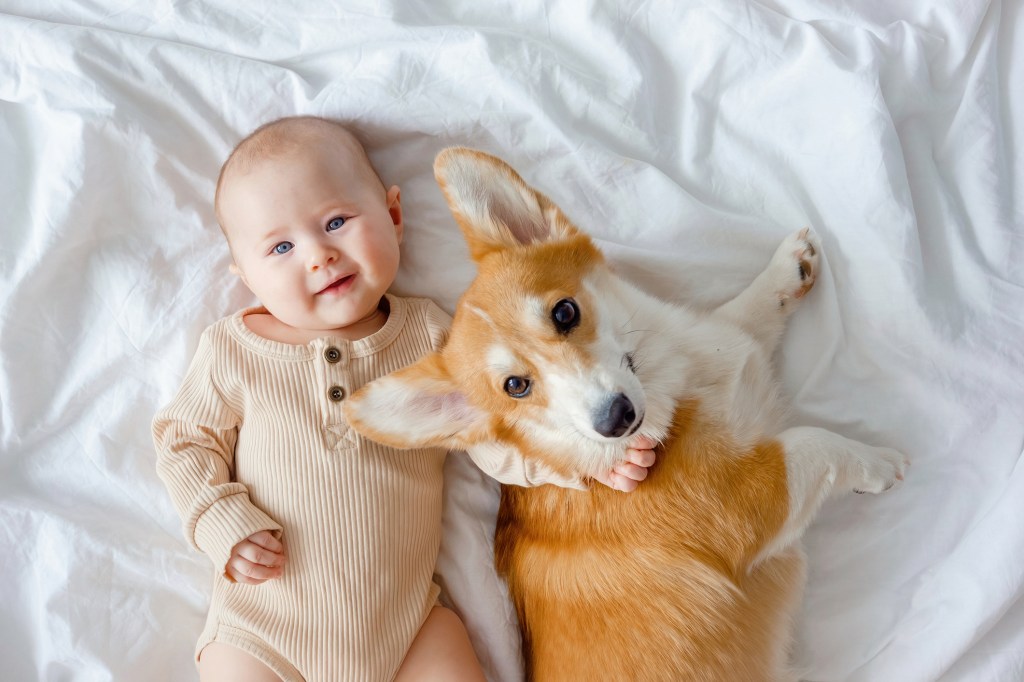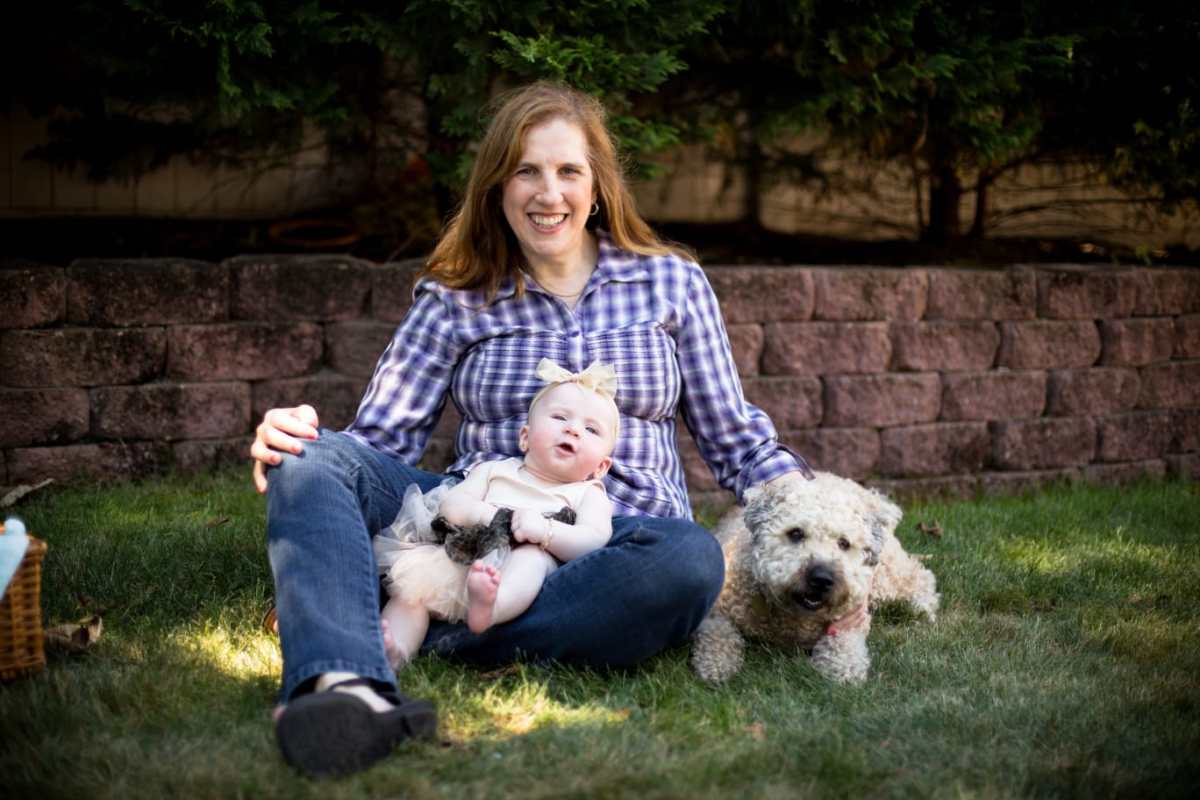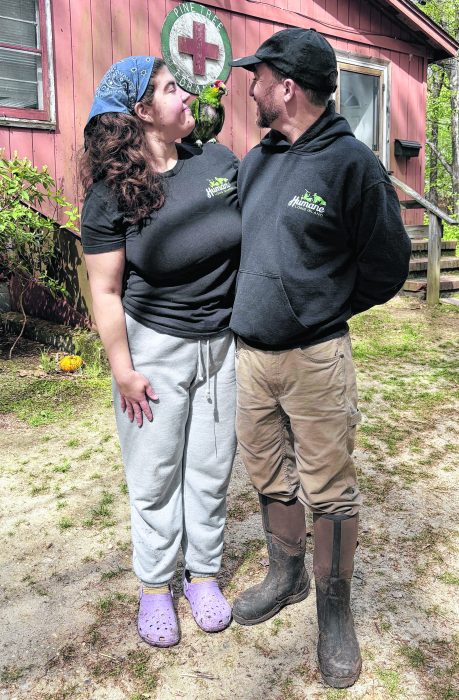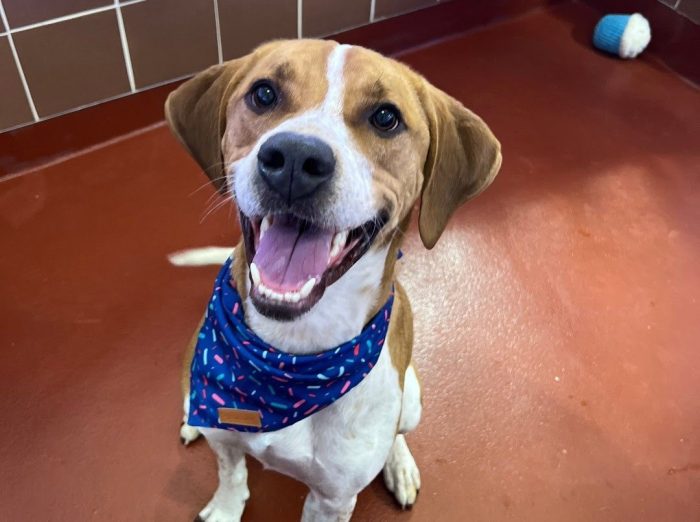How You Can Introduce Your Pet To Your New Baby
Expecting parents, rejoice! There’s a good chance you don’t need to part with your beloved pet once your new addition arrives.
In fact, most dogs can safely and happily coexist with infants and small children, but to ensure success, it’s crucial to invest extra effort and preparation before bringing your baby home.
Dog Trainer and Behavior consultant Specialist Linda Keehn, CDBC, CPDT-KA, DN-DBC, CSAT, from Positive Canine Training, LLC, suggests starting training or reinforcing existing skills as early in the pregnancy as possible.
According to Keehn, the initial step in preparing for a baby is practicing basic yet essential commands like sit, stay, down, and going to a designated spot.
Train your dog to respond to cues while you’re in various locations and positions, even when your hands are full—Keehn recommends practicing with a bag of flour or a laundry basket, avoiding the use of a baby doll as dogs may see it as a toy.
Ensure your dog has a secure and comfortable space, practicing short periods of separation using tools like crates and gates. Create a dedicated and inviting area equipped with a cozy pet bed, toys, even food puzzles to keep them mentally stimulated.
Keehn emphasizes that this space is not punishment but a happy retreat, particularly valuable when visitors come or during floor time with the new baby. It may help your dog feel less isolated if the dog can see you from the spot .
Allow your pup to become familiar with baby equipment, especially items with noise, sounds, and motions like a musical rocking swing. Introduce stimuli like moving toys or playing musical toys early on to help your dog associate with these objects.
“Reflect on how your dog reacted to a vacuum for the first time and recognize that a swing or a push toy might be overwhelming. To prevent negative associations, evaluate new toys and items as they enter the house,” says Keehn, and watch items like bottles or pacifiers as these are choking hazards. Creams like Desitin can be toxic.
This next tip may come as a surprise. Bringing the blanket home from the hospital for the dog to sniff is something to avoid.
“We don’t ask Aunt Sadie to mail us her shirt in preparation for her visit,” says Keehn. “While there’s no harm in bringing the blanket home, if the dog seems uninterested, the parents may be disappointed. Plus, the reaction to the blanket will not reflect in any way a dog’s reaction to the baby.”
For those entrusting their dog to family members while at the hospital, consider leaving the dog for a few extra days. This allows new parents to adjust to life with a baby, especially during the stressful postpartum period.
Taking a few extra days off from doggy duty can significantly ease the transition for everyone involved. And when it’s time for face-to-face introductions, aim for a nonchalant approach. Avoid making a big deal, as it may over-excite everyone. Over time, the dog will naturally investigate.
Hand the baby to someone else and allow the dog to greet you as usual. This will prevent a potentially negative encounter.
The key is to be flexible and have fun. A cheerful outlook will ensure your dog and baby become besties in no time. To connect with Linda Keehn for specialized training and advice, visit www.positivecaninetraining.com.




































